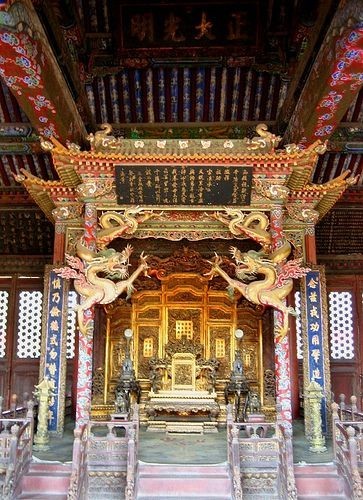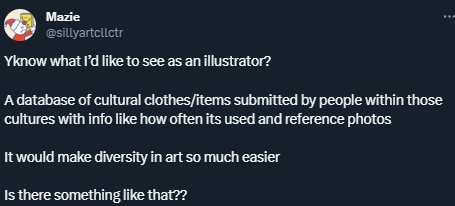Your personal Tumblr journey starts here
Resources - Blog Posts
>> TRUSTED DONATION LINKS FOR TURKEY EARTHQUAKE VICTIMS !!!!
(Disclaimer that I will be updating this post a lot.)
• AKUT
https://www.akut.org.tr/en/donation
• KIZILAY
https://www.kizilay.org.tr/Bagis/BagisYap/43/general-donation
• AFAD
https://en.afad.gov.tr/earthquake-humanitarian-aid-campaign
• AHBAP
https://ahbap.org/
There is the donation link of AHBAP too, but sadly the site didn't let me in. Here is also a donation guide on tumblr. If you can't still donate to the sites above then try these;
• Events?? This is my first time seeing the site :(
https://events.softgiving.com/donate/HasanAbiForTurkeySyriaEarthquakesFund
• "Turkey Earthquake Relief Fund" Donation opened by Barış Özcan, It's under the description of the video.
https://youtu.be/-BvS6PZbCws
• A guide on twitter to how to send products to the areas affected by the earthquake in Turkey. (With the app named "Getir".)
>> USEFUL CARRD'S
• Carrd made by @.simmerbroke on twitter.
https://turkeysyriaearthquake.carrd.co/
• Carrd made by @.616LEBAUS on twitter.
https://helpturkeysyria.carrd.co/
>> FOR TURKISH PEOPLE
• (In Istanbul) Materials are being collected so that the earthquake victims in Kahramanmaraş can be fed, and stay warm. Along with food, blankets, baby diapers and handkerchiefs are being collected too, In the news couple AFAD workers also said that their in need of garbage bag and medicane too. The stuff are being collected at "Avcılar Mesleki Teknik Anadolu Lisesi" on the European side and "Üsküdar Türkan Sabancı Görme Engellileri Okulu" on the Anatolian side. (I live extremely close to Avcılar Mesleki Teknik Anadolu Lisesi It's like a 1-4 minute walk so, my mom went there to give diapers n' handkerchiefs for the earthquake victims.)
• A post by @.tittyblade on tumblr saying that there is a urgent need of voluntariy translators.
yo who wants some Free Fonts
font designer yutaONE is giving away 151 display fonts in ~70 families for free today (august 1, 2024):

they're also available for commercial use but only if you follow them on twitter or instagram (which is weird but whatever lmao)
you can grab them all over on their Booth (pick the 0 yen option):

Don’t forget I have donation resources linked on my pinned post! I’ll also drop the link here! If you have any extra change and you’re feeling charitable, please give these donations funds a look!
On November 7, 2024, Denmark used a racist, culturally biased "parenting competency" test to remove a 2 hour old baby, Zammi, from her loving indigenous Greenlandic Inuit mother, Keira, because her native language, which uses minute facial expressions to communicate, will not be able to "[prepare] the child for the social expectations and codes that are necessary to navigate in Danish society." This test had been recommended not to be used at the federal level before this happened but certain municipalities, including the one this happened in, chose to continue to use it regardless. Not only is this blatantly racist but also violates multiple declarations and conventions that Denmark has signed that protect the rights of indigenous people.
Please sign this petition to help Keira to get her baby back.

yall. yall.
new bill introduced to nulify OSHA. OSHA.


Even the goddamn magats are upset.



The man crying is George Gillette, tribal chairman of the Mandan, Arikara, and Hidatsa tribes of North Dakota in 1948. He was forced under the threat of death of all his people to sign over the tribes’ homeland on the fertile floodplain of the Missouri River in order to build the Garrison Dam.
The final settlement legislation denied tribes’ right to use the reservoir shoreline for grazing, hunting, fishing or other purposes, including irrigation development and royalty rights on all subsurface minerals within the reservoir area.
After the dam was constructed, the three tribes were scattered, their communities and extended families flung to different shores of the 200-mile-long Lake Sakakawea.
This is what your freedom and democracy is built on.
I just read that Donald Trump and his circus took down a website called reproductiverights.gov
This was a website to help women learn about their reproductive rights in the US and to find health care.
This is absolutely disgusting so I’ll share in this post some resources in case you need them:




https://www.plannedparenthood.org/learn
ten years ago. not yesterday. not last year. TEN YEARS AGO.

A Palestinian protester wearing a Santa Claus costume uses a sling to throw back a tear gas canister fired by Israeli soldiers
just found out that there is a sudanfunds website! like gazafunds, it is a compilation of funds for people facing genocide
babe. I know we’re all going thru a lot rn but I just wanna give u the heads up that sesame streets future is in jeopardy. hbo has chosen not to renew it for new episodes (a series that has been going since 1969) and the residents of 123 Sesame Street no longer have a home :(
Texas is still the only state in the USA that has clinics with comprehensive Healthcare for intersex people btw. All yall "let's abandon Texas and Florida" bitches don't have half the backbone of queers living in those states fighting for queer rights
ok, this is amazing. I found a great site with short stories in 34 languages!

"WorldStories is a growing collection of stories from around the world. The collection includes retold traditional tales and new short stories in the languages most spoken by UK children.
We are adding new stories, translations, pictures and sound recordings every week. So keep coming back to enjoy new content!"
my friend and i were going to study a language together and wound up having to cancel our plans due to scheduling pressures, but! through research we came across a really cool resource for reading in a TON of languages: bloom library!

as you can see, it has a lot of books for languages that are usually a bit harder to find materials for—we were going to use it for kyrgyz, for example, which has over 1000 books, which was really hard to find textbook materials for otherwise. as you can see it also has books with audio options, which would be really useful for pronunciation checking. as far as i can tell, everything on the site is free as well.
hobbies masterpost!
a really excellent way to reduce anxiety is to pick up a new hobby. find something you’re interested in, learn it, then use it as a healthy and productive way to cope.
learn to play guitar
learn how to make interactive stories with the free program Twine
learn how to make pixel art
learn another language
learn how to build a ship in a bottle
learn how to develop your own film
learn how to embroider
learn how to make chiptunes (8-bit music)
learn how to make origami (the art of paper folding)
learn how to make tumblr themes
learn how to make jewelry
learn how to make candy
learn how to make terrariums
learn how to make your own perfume
learn how to make your own tea
learn how to build birdhouses
learn how to read tarot cards
learn how to make zines
learn how to code
learn how to whittle (wood carving)
learn how to make candles
learn how to make clay figurines
learn how to knit scarves
learn how to become an amateur astronomer
learn some yoyo tricks
learn how to start a collection
learn how to start body building
learn how to edit wikipedia articles
learn how to decorate iphone cases
learn how to do freelance writing
learn how to make your own cards and
learn how to make your own envelopes
learn how to play the ukulele
learn how to make gifs
learn how to play chess
learn how to juggle
learn how to guerrilla garden
learn how to chart your family history
learn how to keep chickens
learn how to do yoga
learn how to do magic tricks
learn how to raise and breed butterflies
learn how to play dungeons & dragons
learn how to skateboard
learn how to do parkour
learn how to surf
learn how to arrange flowers
learn how to make stuffed animals
Sources for Aesthetic™ Images for your headers/icons/moodboards/Notion/pages/etc that aren't Pinterest
Because eeegh it's a pet peeve of mine whenever I see idk, content and stuff that just uses "credits to pinterest" or "credits to the original creators" without linking back to the actual source, so here are some places you can find images to use that you can find who to credit easily.
Note: some of these resources have specific terms, and not all of them can be used for moodboards/headers/notion/websites/icons/etc. Pls read them on their respective websites first and credit when necessary!!
Ghibli's released screencaps of their movies, for free!
Unsplash has a lot of good photos - just type in the keyword and you can also filter by orientation and color! There are also a bunch of user collections you can look through if you have a specific theme in mind
Some keywords you can use if you're lost on what specific things to look up: [rainy/foggy/sunny/etc] window view, messy desk, vintage, urban, vending machine, hands, grunge aesthetic, crystal/gemstone, skull, foggy/hazy, flower/pressed flower, knife, jewelry, neon, minimal, crown, fountain pen, pearls, pantone
Pexels is kinda similar to unsplash
Art images from museums and libraries
Creative commons
the #transparent png, #transparent tags here on tumblr - please be mindful though that some, if not most of these images don't have clear rules or boundaries for their use, so as a little tip use the ones crediting and adding the source, credit them yourself, and use for your personal use only - dont make stuff with them that you plan on selling!
Some blogs I've found in the tags above that do credit the image source of their pngs: @/strawberry4milk, @/neptunepngs, @/honeyrolls, @/mirai-e-jump, @/png-heaven, @/soapmermaid
Pixabay illustrations
thegraphicsfairy for vintage and antique looking graphics, art, and images
Free design resources (the site also has more than just graphics!)
Pixel Surplus too!
Country Daze Graphics - old webcore style graphics, for personal, non-commercial, credit-required use on webpages. You can read more about their terms of use on the site!
Another old webcore style graphics | 1 | 2 | 3
Old web buttons gifs (caution: full of flashing and eyestrain-y gifs)
Gifcities has those too (also content warning for flashing, sometimes inappropriate looking gifs that would get you ios banned yaknow)
Foxfable - pixel art, for personal use only and requires credit
Animation screencaps | Movie screencaps - for non-commercial, entertainment use
𝕿𝖍𝖊 𝕰𝖑𝖊𝖒𝖊𝖓𝖙𝖘
The Elements are the forces of Nature and life, and are incorporated into ritual and magick. Every aspect of existence is bound up in Earth, Air, Fire, and Water. And the fifth element which is Spirit (or also deemed Aether), which is present in each of the other four. Each of the four classical Elements is associated with one of the four cardinal directions; North, East, South and West.
There are also energetic associations, that add great depth to interpretations of how people with different zodiac signs interact with each other, for each sign is associated with an Element, and each Element is different.
𝐄 𝐀 𝐑 𝐓 𝐇

↟Direction: north
↟Energy: ♀
↟Rules: grounding, strength, healing, nature, stability, foundations, empathy, fertility, death, rebirth, and wisdom.
↟Season/time: winter/midnight
↟Zodiac: Taurus, Virgo, and Capricorn.
↟Ruling Planets: Venus, and Saturn.
↟Colours: green, brown, black, white, and gold.
↟Plants: cedar, cypress, honeysuckle, ivy, magnolia, grains, primrose, oak, sage, and nuts.
↟Crystals: emerald, tourmaline, quartz, granite, dedrock, peridot, onyx, jasper, and amethyst.
↟Tools: pentacle, salt, crystals, dirt, herbs, wood, plants, and flowers.
↟Virtues: patience, truth, dependable, thorough, focused.
𝐀 𝐈 𝐑

↟Direction: east
↟Energy: ♂
↟Rules: mind, clarity, knowledge, logic, abstract, wind, consciousness, intuition, and memory.
↟Season/time: spring/dawn
↟Zodiac: Gemini, Libra, Aquarius.
↟Ruling planets: Mercury, Jupiter, Uranus.
↟Colours: yellow, gold, white, and light blue.
↟Plants: acacia, anis, aspen, clover, frankincense, lavender, lemongrass, pine, and vervain.
↟Crystals: topaz, amber, citrine, jasper, and agate.
↟Tools: feather, wand, staff, incense, pen, broom, and bell.
↟Virtues: intelligent, practical, optimistic.
𝐅 𝐈 𝐑 𝐄

↟Direction: south
↟Energy: ♂
↟Rules: energy, will, destruction, courage, strength, self-knowledge, power, passion, sexuality, self-healing, divinity, light, and flame.
↟Season/time: summer/noon
↟Zodiac: Aries, Leo, Sagittarius.
↟Ruling planets: Sun, and Mars.
↟Colours: red, orange, gold, and white.
↟Plants: allspice, basil, cinnamon, garlic, juniper, hibiscus, nettle, onion, poppies, peppers, and thistles.
↟Crystals: ruby, garnet, red jasper, bloodstone, quartz, tiger’s eye, and agate.
↟Tools: candle, lamp, athame, dagger, and burned herbs.
↟Virtues: courage, enthusiasm, willpower.
𝐖 𝐀 𝐓 𝐄 𝐑

↟Direction: west
↟Energy: ♀
↟Rules: emotion, intuition, psychic, love, deep feelings, the unconscious mind, fertility, tides, reflection, lunar energy, and healing.
↟Season/time: autumn/twilight
↟Zodiac: Cancer, Scorpio, and Pisces.
↟Ruling planets: Moon, Neptune, and Pluto.
↟Colours: blue, aqua, silver, and green.
↟Plants: aloe, apple, chamomile, ferns, gardenia, jasmine, lemon, lily, lotus, moss, seaweed, rose, thyme, and willow.
↟Crystals: amethyst, aquamarine, beryl, blue tourmaline, lapis lazuli, opal, pearl, and sodalite.
↟Tools: seashells, ocean water, seaweed, moss, stones, chalice, and cauldron.
↟Virtues: love, compassion, receptivity, and flexibility.
Norse Small Devotional Acts Masterpost
Æsir Baldr Bragi Eir Frigg Heimdallr Lofn Máni Nanna Njörun Oðin Rán Sigyn Sól Thor Tyr Üllr Víðarr
Vanir Freyja Freyr Njörðr
Jötnar Ægir Jörð Skaði Rökkr Hati and Sköll Hel Fenrir Loki
*This list is a work in progress and I will be creating more in my future free time!* Feel free to message me requests, just know I won’t necessarily get to them immediately. Updated: 03/29/2020
i am not joking we need to force teach cooking in schools. like. it is an essential thing for survival. do you know how easy it is to make things if you know even the bare bones shit about how cooking works. we need to teach teenagers how far you can take an onion and some other veggies it’’s sad that people grow up not knowing how to prepare literally anything. and i’m not talking about oh this home ed class taught me how to make chicken nuggets at home i’m talking about learning the balancing of sweetness and acidity and saltiness and bitterness and shit like that and techniques and oil temperatures and how meats cook. it needs to be taught because it’s literally not even that difficult and it matters so much


refseek.com

www.worldcat.org/

link.springer.com

http://bioline.org.br/

repec.org

science.gov

pdfdrive.com
Fantasy Guide to Interiors





As a followup to the very popular post on architecture, I decided to add onto it by exploring the interior of each movement and the different design techniques and tastes of each era. This post at be helpful for historical fiction, fantasy or just a long read when you're bored.



Interior Design Terms
Reeding and fluting: Fluting is a technique that consists a continuous pattern of concave grooves in a flat surface across a surface. Reeding is it's opposite.
Embossing: stamping, carving or moulding a symbol to make it stand out on a surface.
Paneling: Panels of carved wood or fabric a fixed to a wall in a continuous pattern.
Gilding: the use of gold to highlight features.
Glazed Tile: Ceramic or porcelain tiles coated with liquid coloured glass or enamel.
Column: A column is a pillar of stone or wood built to support a ceiling. We will see more of columns later on.
Bay Window: The Bay Window is a window projecting outward from a building.
Frescos: A design element of painting images upon wet plaster.
Mosaic: Mosaics are a design element that involves using pieces of coloured glass and fitted them together upon the floor or wall to form images.
Mouldings: ornate strips of carved wood along the top of a wall.
Wainscoting: paneling along the lower portion of a wall.
Chinoiserie: A European take on East Asian art. Usually seen in wallpaper.
Clerestory: A series of eye-level windows.
Sconces: A light fixture supported on a wall.
Niche: A sunken area within a wall.
Monochromatic: Focusing on a single colour within a scheme.
Ceiling rose: A moulding fashioned on the ceiling in the shape of a rose usually supporting a light fixture.
Baluster: the vertical bars of a railing.
Façade: front portion of a building
Lintel: Top of a door or window.
Portico: a covered structure over a door supported by columns
Eaves: the part of the roof overhanging from the building
Skirting: border around lower length of a wall
Ancient Greece
Houses were made of either sun-dried clay bricks or stone which were painted when they dried. Ground floors were decorated with coloured stones and tiles called Mosaics. Upper level floors were made from wood. Homes were furnished with tapestries and furniture, and in grand homes statues and grand altars would be found. Furniture was very skillfully crafted in Ancient Greece, much attention was paid to the carving and decoration of such things. Of course, Ancient Greece is ancient so I won't be going through all the movements but I will talk a little about columns.
Doric: Doric is the oldest of the orders and some argue it is the simplest. The columns of this style are set close together, without bases and carved with concave curves called flutes. The capitals (the top of the column) are plain often built with a curve at the base called an echinus and are topped by a square at the apex called an abacus. The entablature is marked by frieze of vertical channels/triglyphs. In between the channels would be detail of carved marble. The Parthenon in Athens is your best example of Doric architecture.
Ionic: The Ionic style was used for smaller buildings and the interiors. The columns had twin volutes, scroll-like designs on its capital. Between these scrolls, there was a carved curve known as an egg and in this style the entablature is much narrower and the frieze is thick with carvings. The example of Ionic Architecture is the Temple to Athena Nike at the Athens Acropolis.
Corinthian: The Corinthian style has some similarities with the Ionic order, the bases, entablature and columns almost the same but the capital is more ornate its base, column, and entablature, but its capital is far more ornate, commonly carved with depictions of acanthus leaves. The style was more slender than the others on this list, used less for bearing weight but more for decoration. Corinthian style can be found along the top levels of the Colosseum in Rome.
Tuscan: The Tuscan order shares much with the Doric order, but the columns are un-fluted and smooth. The entablature is far simpler, formed without triglyphs or guttae. The columns are capped with round capitals.
Composite: This style is mixed. It features the volutes of the Ionic order and the capitals of the Corinthian order. The volutes are larger in these columns and often more ornate. The column's capital is rather plain. for the capital, with no consistent differences to that above or below the capital.
Ancient Rome
Rome is well known for its outward architectural styles. However the Romans did know how to add that rizz to the interior. Ceilings were either vaulted or made from exploded beams that could be painted. The Romans were big into design. Moasics were a common interior sight, the use of little pieces of coloured glass or stone to create a larger image. Frescoes were used to add colour to the home, depicting mythical figures and beasts and also different textures such as stonework or brick. The Romans loved their furniture. Dining tables were low and the Romans ate on couches. Weaving was a popular pastime so there would be tapestries and wall hangings in the house. Rich households could even afford to import fine rugs from across the Empire. Glass was also a feature in Roman interior but windows were usually not paned as large panes were hard to make. Doors were usually treated with panels that were carved or in lain with bronze.
Ancient Egypt
Egypt was one of the first great civilisations, known for its immense and grand structures. Wealthy Egyptians had grand homes. The walls were painted or plastered usually with bright colours and hues. The Egyptians are cool because they mapped out their buildings in such a way to adhere to astrological movements meaning on special days if the calendar the temple or monuments were in the right place always. The columns of Egyptian where thicker, more bulbous and often had capitals shaped like bundles of papyrus reeds. Woven mats and tapestries were popular decor. Motifs from the river such as palms, papyrus and reeds were popular symbols used.
Ancient Africa
African Architecture is a very mixed bag and more structurally different and impressive than Hollywood would have you believe. Far beyond the common depictions of primitive buildings, the African nations were among the giants of their time in architecture, no style quite the same as the last but just as breathtaking.
Rwandan Architecture: The Rwandans commonly built of hardened clay with thatched roofs of dried grass or reeds. Mats of woven reeds carpeted the floors of royal abodes. These residences folded about a large public area known as a karubanda and were often so large that they became almost like a maze, connecting different chambers/huts of all kinds of uses be they residential or for other purposes.
Ashanti Architecture: The Ashanti style can be found in present day Ghana. The style incorporates walls of plaster formed of mud and designed with bright paint and buildings with a courtyard at the heart, not unlike another examples on this post. The Ashanti also formed their buildings of the favourite method of wattle and daub.
Nubian Architecture: Nubia, in modern day Ethiopia, was home to the Nubians who were one of the world's most impressive architects at the beginning of the architecture world and probably would be more talked about if it weren't for the Egyptians building monuments only up the road. The Nubians were famous for building the speos, tall tower-like spires carved of stone. The Nubians used a variety of materials and skills to build, for example wattle and daub and mudbrick. The Kingdom of Kush, the people who took over the Nubian Empire was a fan of Egyptian works even if they didn't like them very much. The Kushites began building pyramid-like structures such at the sight of Gebel Barkal
Japanese Interiors
Japenese interior design rests upon 7 principles. Kanso (簡素)- Simplicity, Fukinsei (不均整)- Asymmetry, Shizen (自然)- Natural, Shibumi (渋味) – Simple beauty, Yugen (幽玄)- subtle grace, Datsuzoku (脱俗) – freedom from habitual behaviour, Seijaku (静寂)- tranquillity.
Common features of Japanese Interior Design:
Shoji walls: these are the screens you think of when you think of the traditional Japanese homes. They are made of wooden frames, rice paper and used to partition
Tatami: Tatami mats are used within Japanese households to blanket the floors. They were made of rice straw and rush straw, laid down to cushion the floor.
Genkan: The Genkan was a sunken space between the front door and the rest of the house. This area is meant to separate the home from the outside and is where shoes are discarded before entering.
Japanese furniture: often lowest, close to the ground. These include tables and chairs but often tanked are replaced by zabuton, large cushions. Furniture is usually carved of wood in a minimalist design.
Nature: As both the Shinto and Buddhist beliefs are great influences upon architecture, there is a strong presence of nature with the architecture. Wood is used for this reason and natural light is prevalent with in the home. The orientation is meant to reflect the best view of the world.
Islamic World Interior
The Islamic world has one of the most beautiful and impressive interior design styles across the world. Colour and detail are absolute staples in the movement. Windows are usually not paned with glass but covered in ornate lattices known as jali. The jali give ventilation, light and privacy to the home. Islamic Interiors are ornate and colourful, using coloured ceramic tiles. The upper parts of walls and ceilings are usually flat decorated with arabesques (foliate ornamentation), while the lower wall areas were usually tiled. Features such as honeycombed ceilings, horseshoe arches, stalactite-fringed arches and stalactite vaults (Muqarnas) are prevalent among many famous Islamic buildings such as the Alhambra and the Blue Mosque.
Byzantine (330/395–1453 A. D)
The Byzantine Empire or Eastern Roman Empire was where eat met west, leading to a melting pot of different interior designs based on early Christian styles and Persian influences. Mosaics are probably what you think of when you think of the Byzantine Empire. Ivory was also a popular feature in the Interiors, with carved ivory or the use of it in inlay. The use of gold as a decorative feature usually by way of repoussé (decorating metals by hammering in the design from the backside of the metal). Fabrics from Persia, heavily embroidered and intricately woven along with silks from afar a field as China, would also be used to upholster furniture or be used as wall hangings. The Byzantines favoured natural light, usually from the use of copolas.
Indian Interiors
India is of course, the font of all intricate designs. India's history is sectioned into many eras but we will focus on a few to give you an idea of prevalent techniques and tastes.
The Gupta Empire (320 – 650 CE): The Gupta era was a time of stone carving. As impressive as the outside of these buildings are, the Interiors are just as amazing. Gupta era buildings featured many details such as ogee (circular or horseshoe arch), gavaksha/chandrashala (the motif centred these arches), ashlar masonry (built of squared stone blocks) with ceilings of plain, flat slabs of stone.
Delhi Sultanate (1206–1526): Another period of beautifully carved stone. The Delhi sultanate had influence from the Islamic world, with heavy uses of mosaics, brackets, intricate mouldings, columns and and hypostyle halls.
Mughal Empire (1526–1857): Stonework was also important on the Mughal Empire. Intricately carved stonework was seen in the pillars, low relief panels depicting nature images and jalis (marble screens). Stonework was also decorated in a stye known as pietra dura/parchin kari with inscriptions and geometric designs using colored stones to create images. Tilework was also popular during this period. Moasic tiles were cut and fitted together to create larger patters while cuerda seca tiles were coloured tiles outlined with black.
Chinese Interiors
Common features of Chinese Interiors
Use of Colours: Colour in Chinese Interior is usually vibrant and bold. Red and Black are are traditional colours, meant to bring luck, happiness, power, knowledge and stability to the household.
Latticework: Lattices are a staple in Chinese interiors most often seen on shutters, screens, doors of cabinets snf even traditional beds.
Lacquer: Multiple coats of lacquer are applied to furniture or cabinets (now walls) and then carved. The skill is called Diaoqi (雕漆).
Decorative Screens: Screens are used to partition off part of a room. They are usually of carved wood, pained with very intricate murals.
Shrines: Spaces were reserved on the home to honour ancestors, usually consisting of an altar where offerings could be made.
Of course, Chinese Interiors are not all the same through the different eras. While some details and techniques were interchangeable through different dynasties, usually a dynasty had a notable style or deviation. These aren't all the dynasties of course but a few interesting examples.
Song Dynasty (960–1279): The Song Dynasty is known for its stonework. Sculpture was an important part of Song Dynasty interior. It was in this period than brick and stone work became the most used material. The Song Dynasty was also known for its very intricate attention to detail, paintings, and used tiles.
Ming Dynasty(1368–1644): Ceilings were adorned with cloisons usually featuring yellow reed work. The floors would be of flagstones usually of deep tones, mostly black. The Ming Dynasty favoured richly coloured silk hangings, tapestries and furnishings. Furniture was usually carved of darker woods, arrayed in a certain way to bring peace to the dwelling.
Han Dynasty (206 BC-220 AD): Interior walls were plastered and painted to show important figures and scenes. Lacquer, though it was discovered earlier, came into greater prominence with better skill in this era.
Tang Dynasty (618–907) : The colour palette is restrained, reserved. But the Tang dynasty is not without it's beauty. Earthenware reached it's peak in this era, many homes would display fine examples as well. The Tang dynasty is famous for its upturned eaves, the ceilings supported by timber columns mounted with metal or stone bases. Glazed tiles were popular in this era, either a fixed to the roof or decorating a screen wall.
Romanesque (6th -11th century/12th)
Romanesque Architecture is a span between the end of Roman Empire to the Gothic style. Taking inspiration from the Roman and Byzantine Empires, the Romanesque period incorporates many of the styles. The most common details are carved floral and foliage symbols with the stonework of the Romanesque buildings. Cable mouldings or twisted rope-like carvings would have framed doorways. As per the name, Romansque Interiors relied heavily on its love and admiration for Rome. The Romanesque style uses geometric shapes as statements using curves, circles snf arches. The colours would be clean and warm, focusing on minimal ornamentation.
Gothic Architecture (12th Century - 16th Century)
The Gothic style is what you think of when you think of old European cathedrals and probably one of the beautiful of the styles on this list and one of most recognisable. The Gothic style is a dramatic, opposing sight and one of the easiest to describe. Decoration in this era became more ornate, stonework began to sport carving and modelling in a way it did not before. The ceilings moved away from barreled vaults to quadripartite and sexpartite vaulting. Columns slimmed as other supportive structures were invented. Intricate stained glass windows began their popularity here. In Gothic structures, everything is very symmetrical and even.
Mediaeval (500 AD to 1500)
Interiors of mediaeval homes are not quite as drab as Hollywood likes to make out. Building materials may be hidden by plaster in rich homes, sometimes even painted. Floors were either dirt strewn with rushes or flagstones in larger homes. Stonework was popular, especially around fireplaces. Grand homes would be decorated with intricate woodwork, carved heraldic beasts and wall hangings of fine fabrics.
Renaissance (late 1300s-1600s)
The Renaissance was a period of great artistry and splendor. The revival of old styles injected symmetry and colour into the homes. Frescoes were back. Painted mouldings adorned the ceilings and walls. Furniture became more ornate, fixed with luxurious upholstery and fine carvings. Caryatids (pillars in the shape of women), grotesques, Roman and Greek images were used to spruce up the place. Floors began to become more intricate, with coloured stone and marble. Modelled stucco, sgraffiti arabesques (made by cutting lines through a layer of plaster or stucco to reveal an underlayer), and fine wall painting were used in brilliant combinations in the early part of the 16th century.
Tudor Interior (1485-1603)
The Tudor period is a starkly unique style within England and very recognisable. Windows were fixed with lattice work, usually casement. Stained glass was also in in this period, usually depicting figures and heraldic beasts. Rooms would be panelled with wood or plastered. Walls would be adorned with tapestries or embroidered hangings. Windows and furniture would be furnished with fine fabrics such as brocade. Floors would typically be of wood, sometimes strewn with rush matting mixed with fresh herbs and flowers to freshen the room.
Baroque (1600 to 1750)
The Baroque period was a time for splendor and for splashing the cash. The interior of a baroque room was usually intricate, usually of a light palette, featuring a very high ceiling heavy with detail. Furniture would choke the room, ornately carved and stitched with very high quality fabrics. The rooms would be full of art not limited to just paintings but also sculptures of marble or bronze, large intricate mirrors, moldings along the walls which may be heavily gilded, chandeliers and detailed paneling.
Victorian (1837-1901)
We think of the interiors of Victorian homes as dowdy and dark but that isn't true. The Victorians favoured tapestries, intricate rugs, decorated wallpaper, exquisitely furniture, and surprisingly, bright colour. Dyes were more widely available to people of all stations and the Victorians did not want for colour. Patterns and details were usually nature inspired, usually floral or vines. Walls could also be painted to mimic a building material such as wood or marble and most likely painted in rich tones. The Victorians were suckers for furniture, preferring them grandly carved with fine fabric usually embroidered or buttoned. And they did not believe in minimalism. If you could fit another piece of furniture in a room, it was going in there. Floors were almost eclusively wood laid with the previously mentioned rugs. But the Victorians did enjoy tiled floors but restricted them to entrances. The Victorians were quite in touch with their green thumbs so expect a lot of flowers and greenery inside. with various elaborately decorated patterned rugs. And remember, the Victorians loved to display as much wealth as they could. Every shelf, cabinet, case and ledge would be chocked full of ornaments and antiques.
Edwardian/The Gilded Age/Belle Epoque (1880s-1914)
This period (I've lumped them together for simplicity) began to move away from the deep tones and ornate patterns of the Victorian period. Colour became more neutral. Nature still had a place in design. Stained glass began to become popular, especially on lampshades and light fixtures. Embossing started to gain popularity and tile work began to expand from the entrance halls to other parts of the house. Furniture began to move away from dark wood, some families favouring breathable woods like wicker. The rooms would be less cluttered.
Art Deco (1920s-1930s)
The 1920s was a time of buzz and change. Gone were the refined tastes of the pre-war era and now the wow factor was in. Walls were smoother, buildings were sharper and more jagged, doorways and windows were decorated with reeding and fluting. Pastels were in, as was the heavy use of black and white, along with gold. Mirrors and glass were in, injecting light into rooms. Gold, silver, steel and chrome were used in furnishings and decor. Geometric shapes were a favourite design choice. Again, high quality and bold fabrics were used such as animal skins or colourful velvet. It was all a rejection of the Art Noveau movement, away from nature focusing on the man made.
Modernism (1930 - 1965)
Modernism came after the Art Deco movement. Fuss and feathers were out the door and now, practicality was in. Materials used are shown as they are, wood is not painted, metal is not coated. Bright colours were acceptable but neutral palettes were favoured. Interiors were open and favoured large windows. Furniture was practical, for use rather than the ornamentation, featuring plain details of any and geometric shapes. Away from Art Deco, everything is straight, linear and streamlined.
Here is a free pdf of the players handbook
Here is a free pdf of xanathars guide to everything
Here is a free pdf to monsters manual
Here is a free pdf to tashas cauldron of everything
Here is a free pdf to dungeon master’s guide
Here is a free pdf to volo’s guide to monsters
Here is a free pdf of mordenkainen’s tomb of foes
For all your dnd purposes
i dont consider myself a 'fashion guru' by any means but one thing i will say is guys you dont need to know the specific brand an item you like is - you need to know what the item is called. very rarely does a brand matter, but knowing that pair of pants is called 'cargo' vs 'boot cut' or the names of dress styles is going to help you find clothes you like WAAAYYYY faster than brand shopping
some fucking resources for all ur writing fuckin needs
* body language masterlist
* a translator that doesn’t eat ass like google translate does
* a reverse dictionary for when ur brain freezes
* 550 words to say instead of fuckin said
* 638 character traits for when ur brain freezes again
* some more body language help
(hope this helps some ppl)
burning text gif maker
heart locket gif maker
minecraft advancement maker
minecraft logo font text generator w/assorted textures and pride flags
windows error message maker (win1.0-win11)
FromSoftware image macro generator (elden ring Noun Verbed text)
image to 3d effect gif
vaporwave image generator
microsoft wordart maker (REALLY annoying to use on mobile)
you're welcome

tweet
Something like this would be so colossally helpful. I'm sick and tired of trying to research specific clothing from any given culture and being met with either racist stereotypical costumes worn by yt people or ai generated garbage nonsense, and trying to be hyper specific with searches yields fuck all. Like I generally just cannot trust the legitimacy of most search results at this point. It's extremely frustrating. If there are good resources for this then they're buried deep under all the other bullshit, and idk where to start looking.
hot artists don't gatekeep
I've been resource gathering for YEARS so now I am going to share my dragons hoard
Floorplanner. Design and furnish a house for you to use for having a consistent background in your comic or anything! Free, you need an account, easy to use, and you can save multiple houses.
Comparing Heights. Input the heights of characters to see what the different is between them. Great for keeping consistency. Free.
Magma. Draw online with friends in real time. Great for practice or hanging out. Free, paid plan available, account preferred.
Smithsonian Open Access. Loads of free images. Free.
SketchDaily. Lots of pose references, massive library, is set on a timer so you can practice quick figure drawing. Free.
SculptGL. A sculpting tool which I am yet to master, but you should be able to make whatever 3d object you like with it. free.
Pexels. Free stock images. And the search engine is actually pretty good at pulling up what you want.
Figurosity. Great pose references, diverse body types, lots of "how to draw" videos directly on the site, the models are 3d and you can rotate the angle, but you can't make custom poses or edit body proportions. Free, account option, paid plans available.
Line of Action. More drawing references, this one also has a focus on expressions, hands/feet, animals, landscapes. Free.
Animal Photo. You pose a 3d skull model and select an animal species, and they give you a bunch of photo references for that animal at that angle. Super handy. Free.
Height Weight Chart. You ever see an OC listed as having a certain weight but then they look Wildly different than the number suggests? Well here's a site to avoid that! It shows real people at different weights and heights to give you a better idea of what these abstract numbers all look like. Free to use.














